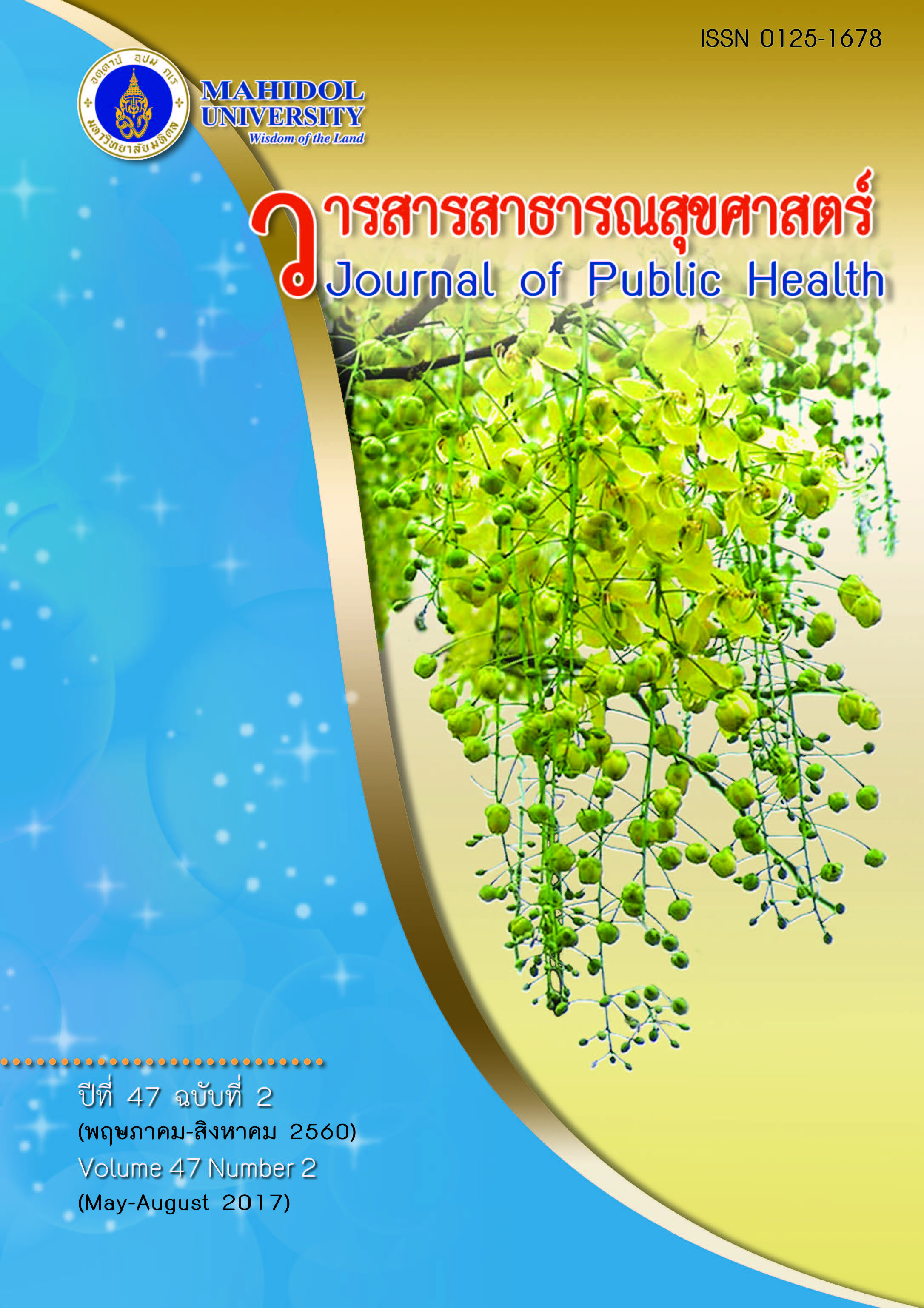อุบัติการณ์การดื้อยาของเชื้อแบคทีเรียจากอุปกรณ์การแพทย์ในห้องผู้ป่วยหนักของโรงพยาบาล
Keywords:
เชื้อดื้อยา, การติดเชื้อในโรงพยาบาล, ห้องผู้ป่วยหนัก, รูปแบบการดื้อยา, resistant bacteria, nosocomial infection, ICU, resistant patternAbstract
การศึกษานี้เป็นการตรวจหาการดื้อยาต้านจุลชีพและรูปแบบการดื้อยาของแบคทีเรียที่ปนเปื้อนบนอุปกรณ์การแพทย์ในห้องผู้ป่วยหนักของโรงพยาบาลพะเยา ตัวอย่างจะถูกเก็บโดยใช้ไม้พันสำลีปราศจากเชื้อจุ่มน้ำเกลือ 0.9% ป้ายบนอุปกรณ์การแพทย์ต่าง ๆ ทำการแยกเชื้อ ระบุชนิดเชื้อ และทดสอบการดื้อยาด้วยวิธี Disc Diffusion ผลการศึกษาพบเชื้อ 4 กลุ่ม ได้แก่ Pseudomonas aeruginosa, Acinetobacter spp., Coagulase-negative Staphylococci (CoNS), และ Coryneform อุปกรณ์ที่พบเชื้อมากที่สุดคือ สายยางให้อาหาร รองลงมาคือ ท่อช่วยหายใจ ชุดให้น้ำเกลือ และสายสวนปัสสาวะ ตามลำดับ การทดสอบความไวต่อยาต้านจุลชีพพบว่า P. aeruginosa, Acinetobacter spp., CoNS และ Coryneform ดื้อยาร้อยละ 100, 60.71, 90.74, และ 75 ตามลำดับ พบการดื้อยาแบบหลายชนิดในเชื้อ P. aeruginosa, Acinetobacter spp. และ CoNS คิดเป็นร้อยละ 100, 53.57, และ 50 ตามลำดับ นอกจากนี้รูปแบบการดื้อยาของ Acinetobacter spp., P. aeruginosa, CoNS และ Coryneform มีเท่ากับ 10, 5, 20, และ 3 รูปแบบ ตามลำดับ ซึ่งแสดงถึงรูปแบบการดื้อยาที่หลากหลายของแบคทีเรียต่อยาต้านจุลชีพ ผลที่ได้จากการศึกษานี้แสดงให้เห็นถึงการแพร่กระจายของเชื้อดื้อยาต้านจุลชีพในสิ่งแวดล้อม จึงควรควบคุมปริมาณการใช้และชนิดของยาต้านจุลชีพอย่างเหมาะสม รวมถึงการปฏิบัติงานของบุคคลากรทางการแพทย์ เพื่อป้องกันการเพิ่มขึ้นและการแพร่กระจายของเชื้อดื้อยา
Incidence of Resistant Bacteria Isolated from Medical Devices in the Intensive Care Unit of a Hospital
This study was conducted to investigate antimicrobial resistance and resistant patterns of bacteria that contaminated medical devices in the intensive care unit of Phayao Hospital. The samples were collected using sterile cotton swabs dipped in 0.9% normal saline and then swabbed onto the medical devices. Subsequently the bacteria were isolated, identified and then investigated for antimicrobial resistance using the disc diffusion method. The result exhibited 4 groups of the bacteria, namely, Pseudomonas aeruginosa, Acinetobacter spp., Coagulase-negative Staphylococci (CoNS), and Coryneform. The bacteria were mostly found on nasogastric tubes, followed by endotracheal tubes, infusion sets and urinary catheters, in ranked order. The antimicrobial susceptibility test showed that P.aeruginosa, Acinetobacter spp., CoNS, and Coryneform were resistant to antimicrobials with a percentage of 100, 60.71, 90.74, and 75, respectively. Multidrug resistance bacteria was found in P.aeruginosa, Acinetobacter spp., and CoNS at 100, 53.57, and 50%, respectively. Moreover, the resistant patterns of Acinetobacter spp., P. aeruginosa, CoNS, and Coryneform were recorded as 10, 5, 20, and 3 patterns, respectively which portrayed various resistant patterns of bacteria on antimicrobial agents. This study has indicated the spread of antibacterial resistant bacteria in the environment. The optimal used dosage and type of antimicrobials as well as medical staff performance should be promoted to prevent the increase and reduce the spread of antimicrobial resistant bacteria.
Downloads
Published
Issue
Section
License
Creative Commons License CC-BY-ND

